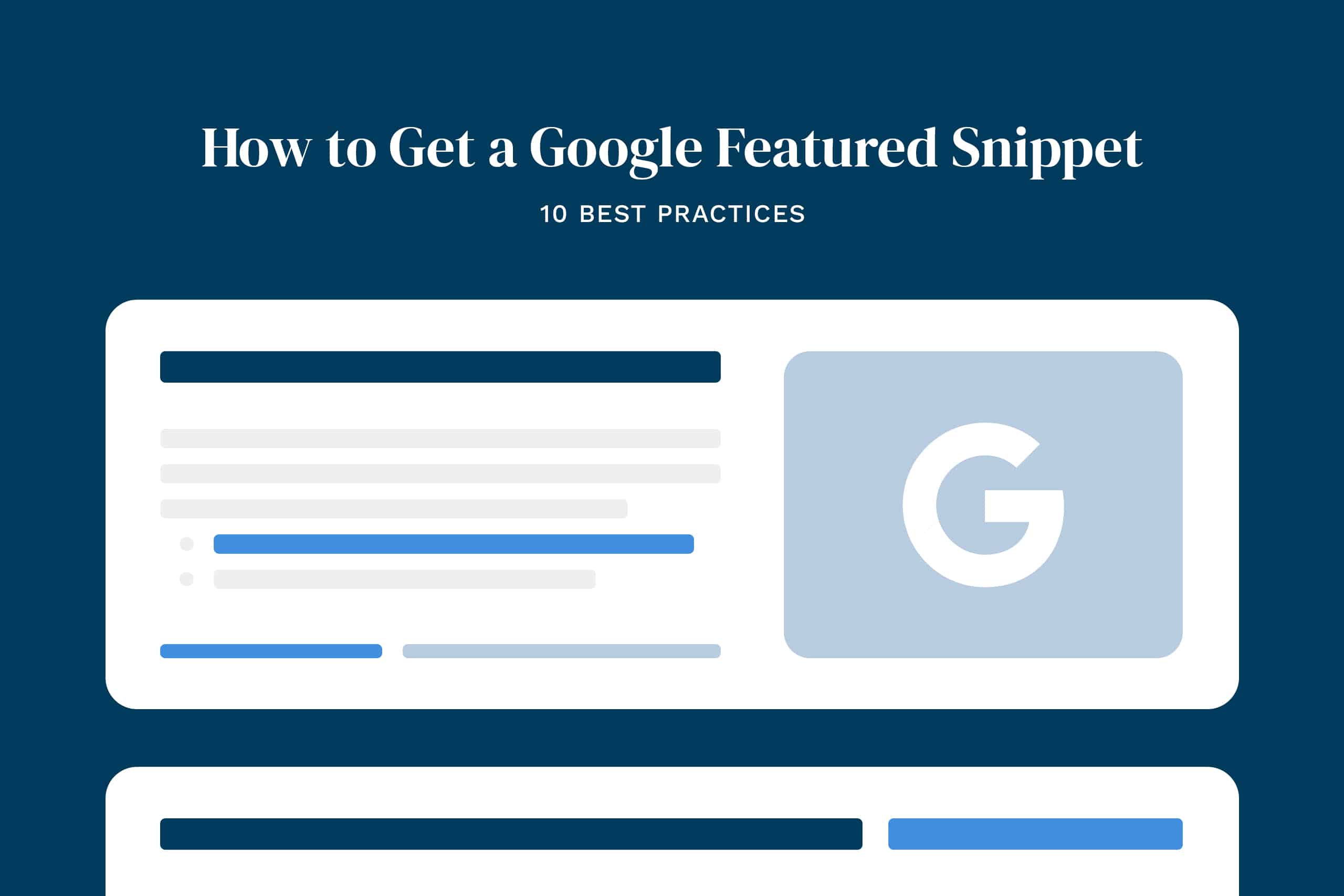
How to get a Google featured snippet — 6 best practices: Google introduced featured snippets in 2014 as a way to provide users with more accurate and comprehensive search results. These snippets are a smaller version of the main content that appears within the search result, including a preview of the content, an image, and other related information.
Initially, featured snippets were text-based and had to be manually optimized by marketers. In 2015, Google added rich snippets to allow for images, videos, and other media to be included in featured snippets. Then in 2017, they began offering automated answers to some queries, providing users with direct answers instead of links.
Finally, 2019 saw the introduction of the featured snippets carousel feature, which allowed users to scroll through multiple answers at once. Today, featured snippets are an important part of SEO strategy as they can help boost a website’s visibility in search results and increase traffic. In this post, we will talk more in-depth about why featured snippets are a great search engine results page (SERP) tool and how to improve your website's chances of showing up in a featured snippet.
What is a Google Featured Snippet?
A Google featured snippet is a special search result that appears at the top of Google's search engine results page (SERP) when a user searches for the answer to a frequently-asked question. The featured snippet is intended to give the searcher a quick and concise answer to their question—typically 2-3 sentences—saving them time and effort from having to click through to a website or read through a long block of text to find what they're looking for.
Why are Google's Featured Snippets Important?
Google's featured snippets are important because they provide quick, concise answers to users' queries. By displaying featured snippets prominently in search results, users can quickly get the information they're looking for without having to click through to a website. This helps increase user engagement and satisfaction with Google's search service, as well as improve its rankings in search engine rankings.
How Can Google's Featured Snippets Help Rankings?
Being featured in a featured snippet can benefit websites, bringing in additional traffic and helping boost their visibility. The reality with search engines is that most people do not venture past the first page or even the first three results, for that matter, making featured snippets an essential tool for small to mid-sized businesses and blogs. Featured snippets may also appear in other places, such as Google Images and Google Maps, which can further increase visibility and web traffic.
Voice Search Implications on Featured Snippets
Voice search greatly impacts how Google displays its featured snippets since they were originally (partially) designed to be read aloud by mobile and Google Home devices. For example, voice search results are often shorter and more conversational, so the content that is displayed in the featured snippet needs to be optimized to match this style.
As voice search continues to grow in popularity, businesses and blogs must ensure that their content is optimized for both traditional and voice search queries to maximize visibility in search results in the form of featured snippets.
What are the Different Types of Featured Snippets?
Google featured snippets come in all different shapes and sizes, but these are the three most prevalent types you will see in your quest for featured snippets:
Paragraph

The most common type of featured snippet, paragraph featured snippets, are pulled directly from paragraph tags (see below for a code markup example) on a web page that contains 2-3 sentences that concisely and accurately answer a frequently-asked question.
<p>This is an example of an HTML paragraph tag. Be sure to add this directly beneath your heading tag with 2-3 great sentences explaining the answer to the question.</p>List
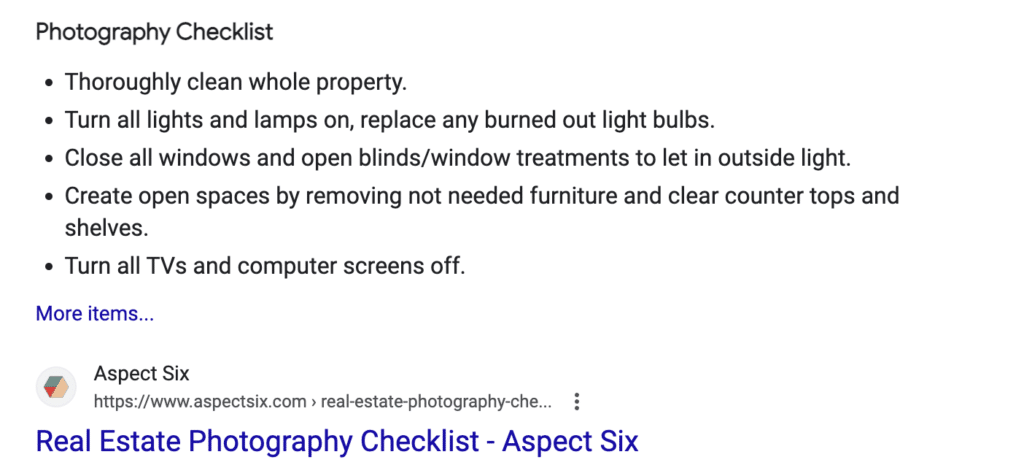
Another common type of featured snippet is the list. These snippets are pulled from web pages that use ordered (numbered) and unordered (bulleted) list markups to answer their question (see below for code markup examples).
Unordered List (Most Common List Type)
<ul>
<li>This is a list item in an unordered list</li>
<li>This is another list item</li>
<li>This is the last list item</li>
</ul>Ordered List
<ol>
<li>This is a list item in an ordered list</li>
<li>This type of list uses numbers instead of bullet points</li>
<li>Use this type for answers with steps that should be followed in order</li>
</ol>Table
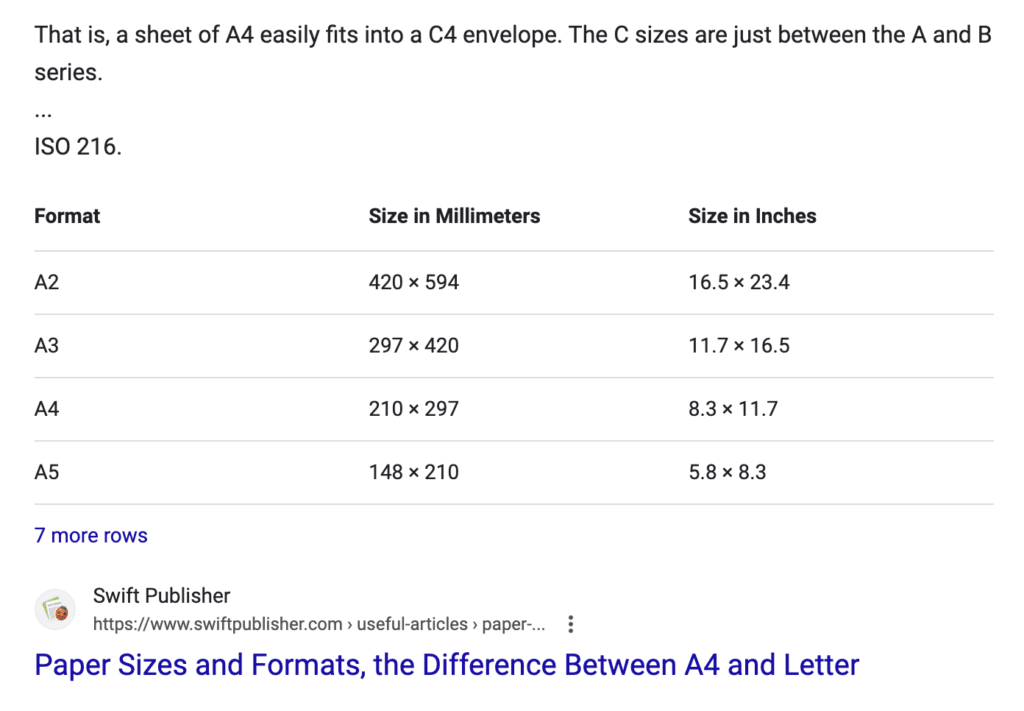
Depending on your search, Google might opt to show you a featured snippet containing data pulled from an HTML table (see below for a code markup example). This snippet is often useful for quick comparisons, data analysis, or general statistics.
<table>
<tr>
<th>Company</th>
<th>Service</th>
<th>Location</th>
</tr>
<tr>
<td>Beyond Blue Media</td>
<td>SEO</td>
<td>Fort Collins, CO</td>
</tr>
<tr>
<td>Beyond Blue Media</td>
<td>Social Media Management</td>
<td>Loveland, CO</td>
</tr>
</table>How to Get a Google Featured Snippet
Now for the whole point of this post, let's discuss the 10 best practices to follow when trying to get your website to appear as a Google featured snippet:
1. Be Thoughtful About The Questions You Ask
By far, the most important step in landing a featured snippet on Google is figuring out the right questions to answer. If, for example, your website contains content mainly focused on SEO and marketing, it would be unwise and unrealistic to attempt to garner a featured snippet pertaining to the question "How to Clean Car Tires."
Why? Well, Google takes authoritativeness and expertise into account when deciding which web pages to show as a featured snippet, so it is important to build a strong authority within your subject matter in which you also possess expertise. Topics that stray from your subject might not be seen as expert-level advice and may not be shown as a featured snippet.
Building off that, it's crucial to study your data and develop a strong list of topics to discuss (similar to creating a blog topic cluster). A solid approach to figure out which questions to highlight would be to write your blog posts/page content and then put yourself in the reader's shoes; which questions come to mind? Which questions do you think would be the most beneficial to highlight?
Using questions that start with "What is" or "Who is" is an effective technique since most search queries use a similar format. Obviously, if your question involves one of the other where, when, or why formats, adjust accordingly, but sticking with the "is" types has proven most effective.
2. Use a Heading Tag to Ask the Question
Google's page crawlers can easily detect HTML markup and, since the dawn of SEO, have been placing importance on the correct, hierarchal use of heading tags. As such, using either an <h2> or <h3> tag is crucial to ask the question whose answer you hope to show up in a featured snippet.
In our experience, using an h2 tag has been the most effective approach; h3 tags can still work but, in some cases, tend to show up in featured snippet results instead. See below for an example of the correct HTML markup:
<h2>In what year was the iPhone invented?</h2>
<p>This is the answer to the above question. Usually, this consists of 2-3 high-quality sentences. But, use as many sentences as needed to get your point across.</p>3. Answer the Question Correctly and Concisely
Do not use one-word answers. Conversely, avoid writing an essay to answer the question. Two to three sentences are a perfect length, so long as you make sure to answer the question thoroughly and accurately.
With that said, there is a lot of false information on the internet, and Google's recent core updates aimed to reward quality, factual information. Featured snippets are no exception; make a conscious effort to spread factual information. Otherwise, your website is less likely to appear as a featured snippet.
Here is a great example of an attempt at a featured snippet:

And here's a poor example of an attempt at a featured snippet:

4. Pay Attention to Your Highest-Ranking Pages
SEO is an uphill battle for most of us, but featured snippets don't have to be an added layer of stress. Analyze your SEO data. See which pages are your top performers, whether they're city landing pages, static pages, blog posts, resources, etc., and optimize them for featured snippets. For example, if we look at our Google Search Console data, we can see our top-performing pages:
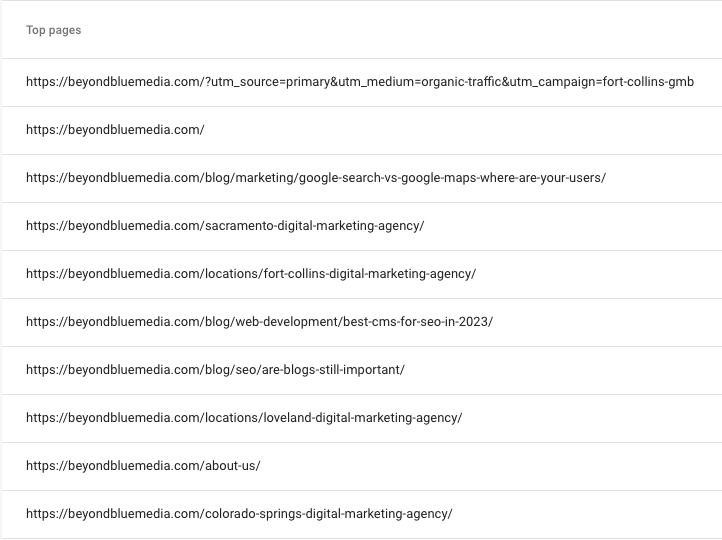
Use that information to your advantage! It's no secret that most featured snippets come from the top five (this is just a general ideology we've noticed) results on Google SERPs, so if you take a page that's already ranking on the first page, your chances of garnering a featured snippet from that page is much higher than on a brand new page.
With the above information, a good idea would be to focus on optimizing these pages for featured snippets:
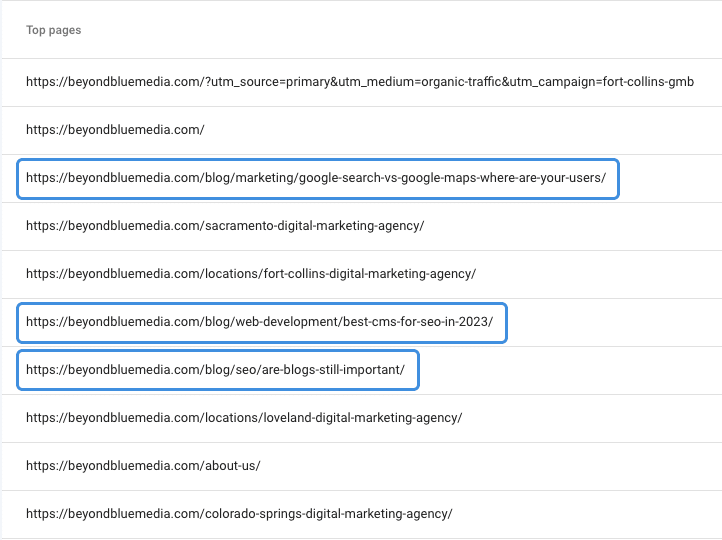
There are a couple of reasons why these would be the best options. First, they are blog posts, which in our case, typically contain valuable information pertaining to informational searches. You will also find that most featured snippets come from blog posts because when people conduct informational searches, they typically want a fast answer.
The second reason is that, as I said above, they are some of our top-ranking pages. But, just because they are top ranking within Google Search Console doesn't necessarily mean they are the "top ranking" pages; GSC only tells you how many impressions vs. clicks you get, not where they stand on the SERP. But generally speaking, GSC is a great alternative to the expensive SEO software suites on the market.
Be careful with changing indexed pages; too much movement can adversely affect your rankings, so only make minor changes in favor of featured snippets. That being said, don't limit your featured snippet endeavors only to your already high-ranking pages; keep optimizing all future pages for featured snippets.
5. Use the Correct Formatting

As we mentioned previously, formatting is vital for getting a featured snippet. As you can see in the photo above, this is a screenshot of one of the first <h2> and <p> tags of this blog post. This particular syntax is optimal for featured snippets because we are using a heading tag (in this case, an h2) with a frequently-asked question pertaining to our website subject matter followed by a paragraph tag containing a concise and accurate answer.
Depending on the featured snippet you are aiming for, refer to our above examples of optimal syntax for the various types. The common denominator with each type is using a heading tag, so do not overlook the importance of proper formatting.
Most CMSs and page builders will work with a WYSIWYG editor, so do your best to set your text to the appropriate tags if your editor allows it.
6. Avoid First-Person Answers
Because featured snippets were originally designed to answer voice-prompted questions, it's important to remember how your answer might sound if read aloud in response to your questions to Siri, for example. Avoiding the first-person narrative is a surefire way to land your next featured snippet, as it will ensure the question will be answered in a manner that both voice searchers and search engine users can interpret.
As an example, if we were to answer the question "what is a Google featured snippet?" it wouldn't make much sense to answer in the first person since most people won't care about your personal experience and might misinterpret your response to think it is only true in your case.
7. Don't Use Passive Voice

Passive voice can be interpreted in a way that might imply one doesn't know what they're talking about or lacks confidence (see what I did there? See how passive voice made that sound uneasy and untrustworthy?). State your answers using active voice! Active voice not only impacts the quality of your answer, but it also affects your trust level.
For example, which of these statements would you trust more?
Featured snippets can be viewed favorably by users due to their ability to improve search performance.
Featured snippets are important because they can drive more traffic to your website and increase search visibility.
The first example lacks confidence and a matter-of-fact tone. Most people want to hear answers stated rather than suggested, so it is critical to use active voice and minimize passive voice in your answers.
8. Remove Biases
One of the easiest ways to prevent your web page from showing as a featured snippet is by incorporating an unnecessary bias. For this purpose, a bias is anything from a brand name, an opinion, or a non-replicable theory with nothing to back it.
Although we operate as Beyond Blue Media, aside from this particular paragraph, there is no mention of our particular brand in this post because that will automatically diminish our authenticity in Google's eyes. Google's intention is to provide quality, non-biased results that act as facts rather than a sales pitch.
9. Improve Your Website's Overall SEO Performance

This goes without saying, but attempting to get a Google featured snippet is virtually worthless without practicing basic SEO principles. Get your technical SEO in tip-top shape, start building your backlink profile, and make sure your content is valuable—showing expertise, experience, authoritativeness, and trust. Factors like domain authority aren't always in your control, but there are great steps you can take to improve your score.
As mentioned above, Google is likelier to show high-ranking web pages as featured snippets. Think of featured snippets as the cherry on top rather than the whole ice cream sundae. While there isn't a bulletproof guide to SEO, many websites are dedicated to sharing the latest and greatest news and tips to boost your search performance and visibility, so do your research and get your SEO on point.
10. Be Patient and Understand How Featured Snippets Work
Aside from using the aforementioned best practices, the most important part about working toward getting a Google featured snippet is patience. It's imperative to understand that following these tips is not a surefire way to lock down a featured snippet because, after all, Google has complete liberty in showing snippets to certain people based on certain queries.
Website owners and developers have no control over which snippets will be shown to whom, meaning you should not be discouraged if your search query returns snippets from sites other than yours. And, unfortunately, there is no way to track how often your pages appear as featured snippets, which can be discouraging for some.
Still, there are signs to look for, including an increased number of page impressions with a static number of page clicks (this can sometimes be a good sign, as it means people are coming across your page frequently in search results, typically in the form of featured snippets; it can also be a poor signal as it pertains to click-through rate, which is why this should only be taken with a grain of salt).
The Bottom Line
If you've ever wondered how to get a Google featured snippet, these ten tips are a great way to make that dream into a reality. Remember that following these steps alone will not guarantee a featured snippet but will set your website up for success when Google decides which featured snippets to show next.
By far, the most important step in this process is making sure you don't flake on the rest of your SEO labor. SEO is a constant battle that requires many hours of work per month to ensure your site is visible to all current a future customers and clients. But SEO doesn't have to be a constant uphill battle; contact us today to learn more about our SEO packages and how we can get your website to outrank your competitors in no time.
To learn more about the importance of SEO, SEO best practices, and other great marketing-related tips, check out the rest of our blog.


